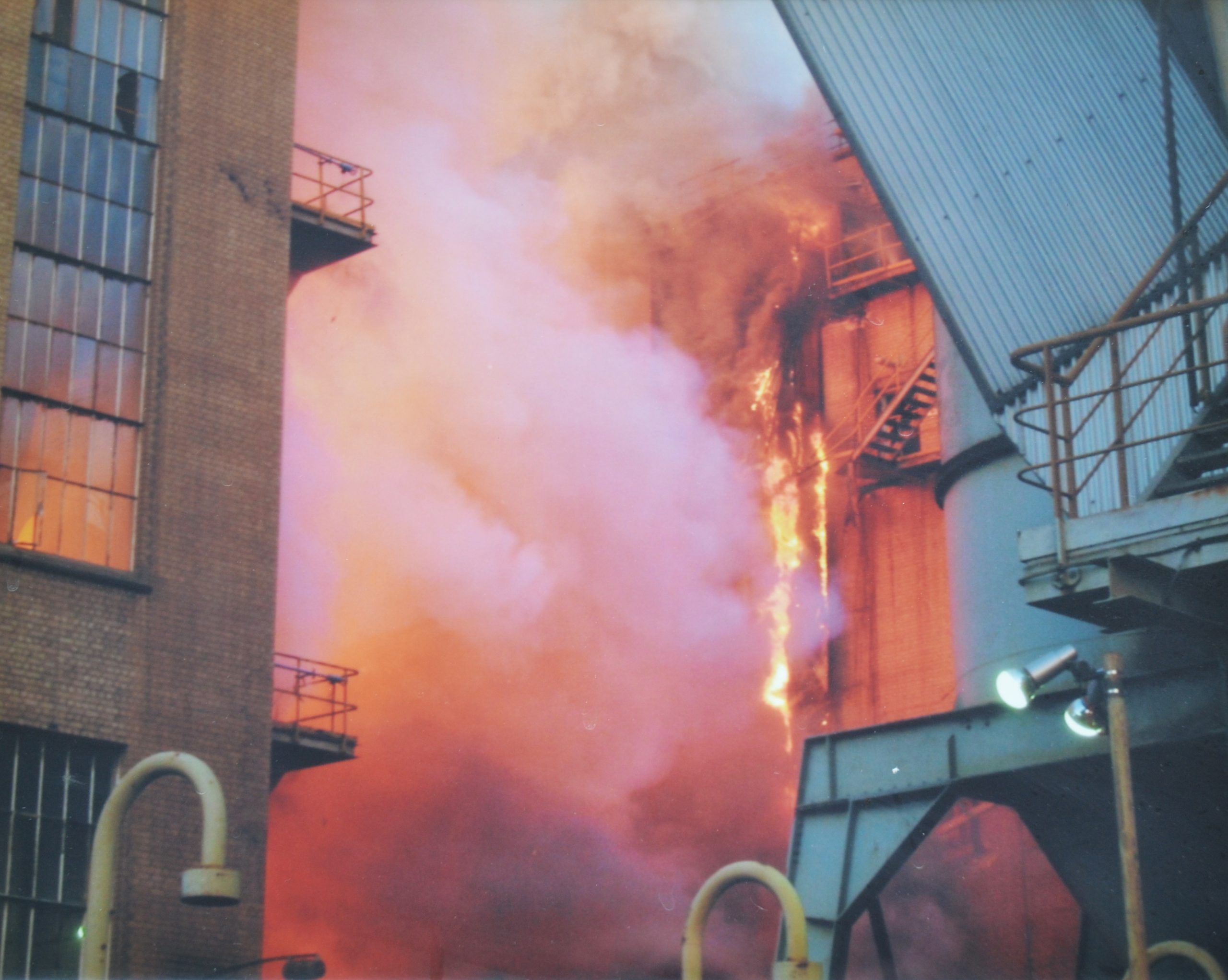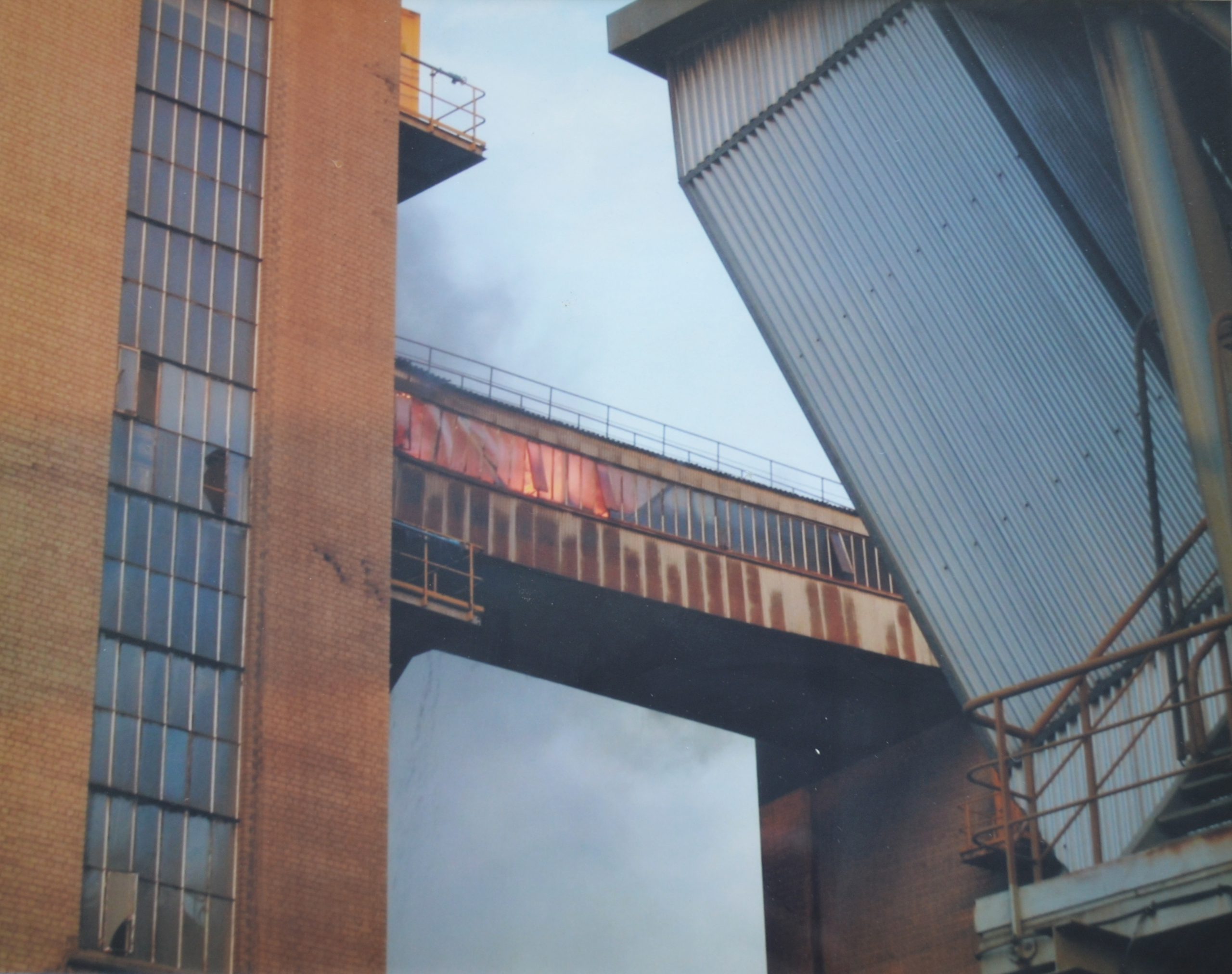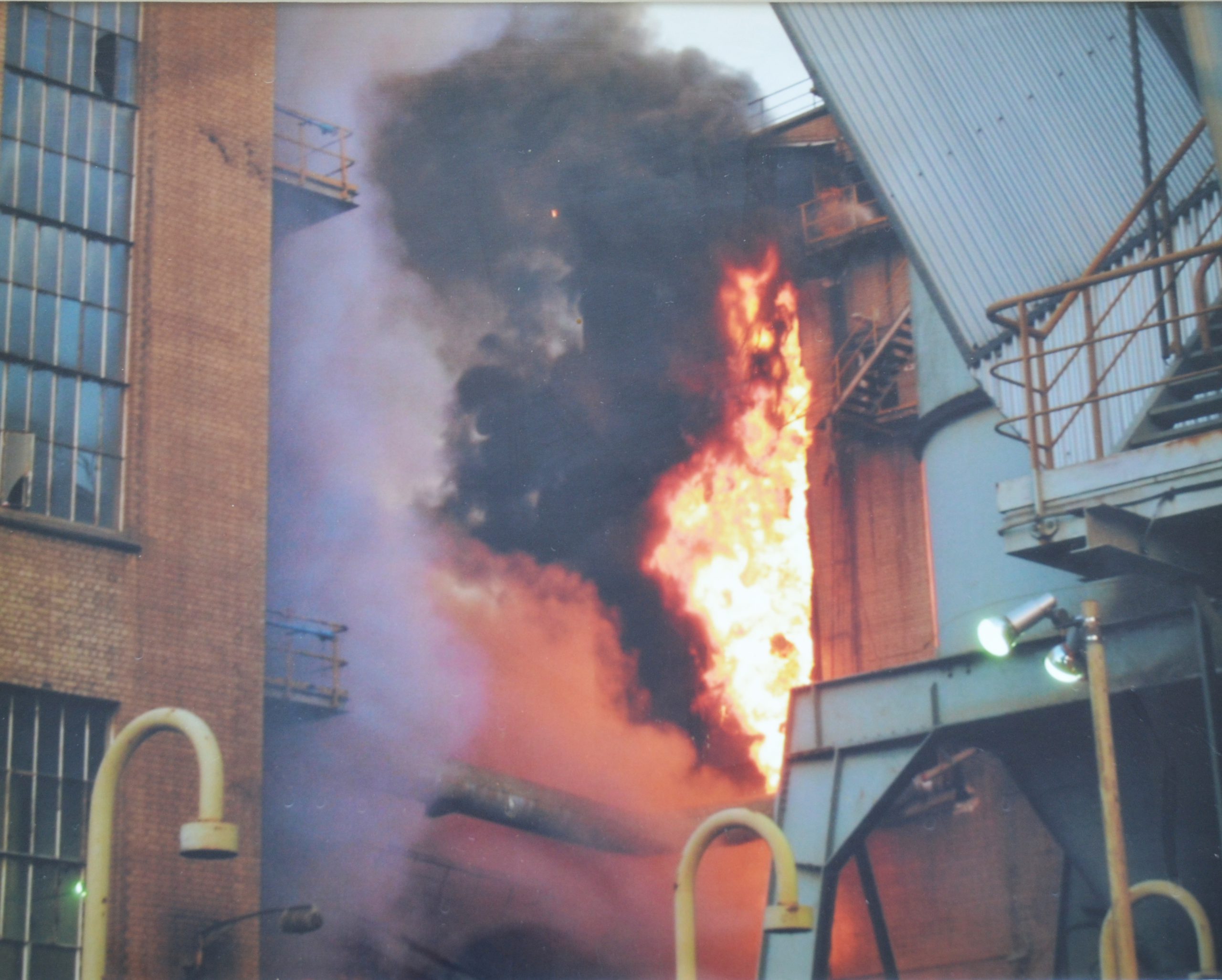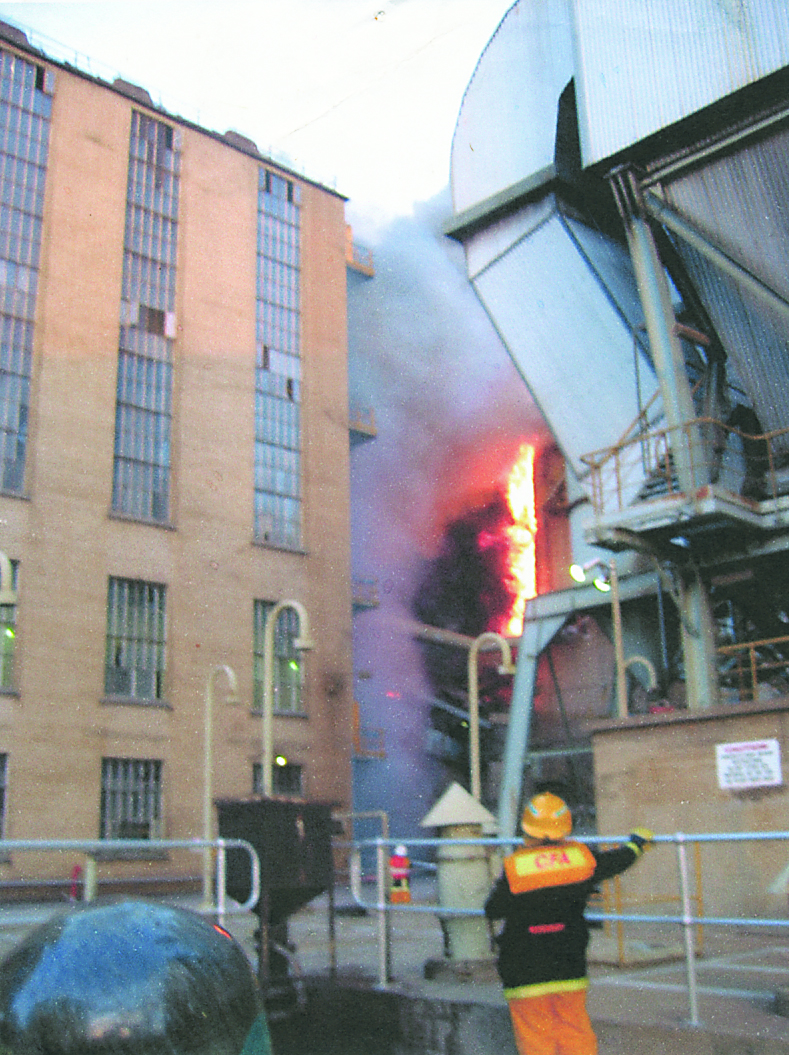A CALF strain was the only injury sustained during the devastating 2003 Boxing Day fire at Morwell’s Energy Brix briquette factory, according to the public record.
Ask the firies involved in the epic 20-hour fight however, and they will tell you the reality was all-too-close to becoming far more serious.
“We were seconds away from losing seven volunteer firefighters that night,” then CFA incident controller Phil Glover recollected.
“That was easily the closest I’ve come in my career to a legitimate catastrophe.”
Ten years on from the high-impact blaze, which almost brought the briquetting business to its knees, a behind-the-scenes near-miss story lingers fresh in the mind of some Latrobe Valley firies.
With the business’ operational ‘A’ factory gutted by an initial fireball which tore through the building’s 10 storeys, flames were soon licking their way to the adjacent ‘B’ factory through a connecting top floor conveyor.
In a desperate attempt to knock back the blaze’s spread, a team of seven volunteer firefighters were positioned in ‘B’ factory’s top floor, where the inter-building conveyor entered the structure.
Some 25 metres below, coordinating multiple crews across both buildings from the ground, Mr Glover saw impending signs the massive conveyor system was not handling the fire well.
“Watching it, you could see it was starting to sag – the steel was bending under the heat – but I don’t think they could see that from up there,” Mr Glover said.
“You didn’t have to be an engineer to see what was going to happen – I ordered personnel in both ‘A’ and ‘B’ buildings to evacuate immediately.
“I’ve listened to the recording of that radio log since, and I certainly used a few profanities to accentuate my immediate concern.”
The call for evacuation could not have come a moment sooner; shortly after the top floor team moved off the conveyor, the entire structure broke from its bookend moorings, crashing to the ground in a plummet of flaming wreckage.
“I could see them standing on it virtually seconds before it collapsed and had they stayed there any longer they would’ve come down with the structure,” Mr Glover said.
“We had some extremely agitated firefighters that came down from that top floor; they were covered in coal dust from head to toe.
“I think my heart started beating 10 minutes later – it wasn’t a pleasant experience.
It was a high-stakes moment during the callout (not to mention the lives of numerous firies), however the Energy Brix blaze is remembered equally for the effort put in by about 70 firefighting personnel, who fought through the night and inhospitable conditions.
Beginning as a spontaneous combustion amid built-up coal dust in ‘A’ factory’s ground floor conveyor, the quick-spreading fire vindicated long held safety warnings by power industry unions, concerned about maintenance amid ageing power industry infrastructure.
“One of our volunteer fire fighters was actually working there, and he saw paint starting to blister on a conveyor system that had stopped working because of a broken gear – the compacted coal spontaneously ignited like a hay stack,” Mr Glover said.
“He had felt that it was quite hot and got everyone out of the factory before a violent (coal) dust explosion blew the doors off the ground floor. It took control of coal dust right throughout the building almost instantly.”
Career firefighter Peter Lockwood, now Traralgon Fire Brigade officer in charge, said by the time an aerial appliance arrived on the scene from Dandenong, the fire was threatening to spread to a third factory building via an extension of the already collapsed gantry system.
“We had to move quickly to stop the spread from ‘B’ to ‘C’ – but because of what had already happened, we had a fair idea what to expect and how to stop it with the aerial ladder,” Mr Lockwood said.
(It was the lack of a local aerial appliance during the initial stages of the Energy Brix fire which fuelled the decade-long push to permanently appoint a rescue ladder in the Latrobe Valley. The ‘Bronto’ rescue ladder subsequently arrived in Traralgon in December 2011.)
Meanwhile, dealing with intense heat, confined spaces, meshed floors and fireballs in an extremely dirty and unpleasant workspace, crews equipped with breathing apparatus worked internally with patience and skill to meticulously douse the smouldering coal dust, built up over the years within the factory walls and surfaces.
“Generally one of the problems with coal dust is it floats on water – if you don’t do it properly, you can create a dust explosion with your hose, which creates an additional fire risk,” Mr Lockwood said.
“After the gantry collapse we had to be fairly cautious, and there were a lot of cracks in the structure, so we had to identify the no-go areas that we steered clear of.
“My crew got there about 9pm and worked through the night; it was very hot, dirty and arduous work – the guys were absolutely jet black when they came out of there.
“There’s been a lot said about that fire, but all that work those boys did inside those factories that night, they were the heroes of this story.”















